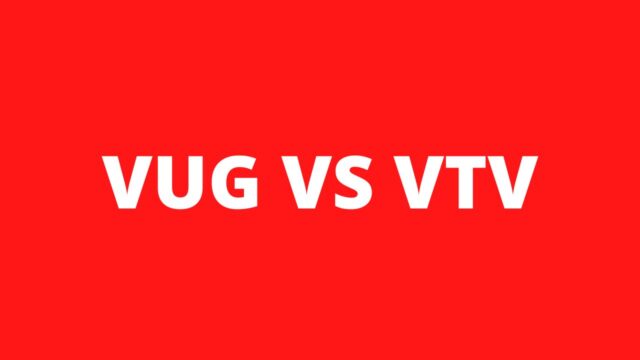
Investing in the stock market can be a daunting task, especially for those who are new to the game. With thousands of stocks to choose from, investors may find it challenging to determine which ones to add to their portfolio. Two popular options for investors looking for exposure to the U.S. stock market are the Vanguard Growth ETF (VUG) and the Vanguard Value ETF (VTV).
VUG and VTV are two exchange-traded funds (ETFs) offered by Vanguard. VUG tracks the performance of the CRSP US Large Cap Growth Index, while VTV tracks the performance of the CRSP US Large Cap Value Index. Both indices are composed of large-cap U.S. stocks and are designed to provide investors with exposure to different segments of the U.S. stock market.
While both VUG and VTV offer exposure to the U.S. stock market, they differ in their investment objectives and investment styles. In this article, we will compare VUG and VTV in terms of their investment objectives, investment styles, and performance.
Investment Objectives
VUG’s investment objective is to track the performance of the CRSP US Large Cap Growth Index. The index measures the performance of large-cap growth stocks in the U.S. equity market. The index includes companies with strong growth potential in sectors such as technology, healthcare, and consumer discretionary.
VTV’s investment objective is to track the performance of the CRSP US Large Cap Value Index. The index measures the performance of large-cap value stocks in the U.S. equity market. The index includes companies that are considered undervalued by the market and have a higher dividend yield than the average stock in the market. These companies are typically found in sectors such as financials, energy, and utilities.
Investment Styles
The investment styles of VUG and VTV are based on the investment objectives of their underlying indices. VUG focuses on growth stocks, which are companies that are expected to grow at a faster pace than the overall market. These companies typically have high earnings growth rates, high price-to-earnings ratios, and low dividend yields. VUG’s portfolio consists of companies such as Amazon, Apple, and Facebook.
On the other hand, VTV focuses on value stocks, which are companies that are considered undervalued by the market. These companies typically have low price-to-earnings ratios, high dividend yields, and slower earnings growth rates. VTV’s portfolio consists of companies such as Berkshire Hathaway, Johnson & Johnson, and Exxon Mobil.
Performance
The performance of VUG and VTV can be compared by looking at their historical returns, expense ratios, and dividend yields.
Historical Returns
Over the past five years, VUG has had an average annual return of 18.68%, while VTV has had an average annual return of 12.57%. This means that VUG has outperformed VTV by over 6% per year on average over this period. However, it’s important to note that past performance does not guarantee future results.
Expense Ratios
Expense ratios are the annual fees charged by ETF providers to manage the fund. Lower expense ratios can lead to higher returns for investors. VUG has an expense ratio of 0.04%, while VTV has an expense ratio of 0.04%. Both ETFs have very low expense ratios, which is one of the reasons why Vanguard is popular among investors.
Dividend Yields
Dividend yields are the annual dividends paid by a company as a percentage of its stock price. VTV has a higher dividend yield than VUG because it invests in value stocks that typically have higher dividend yields. VTV has a current dividend yield of 2.71%, while VUG has a current dividend yield of 0.72%.
When choosing between VUG and VTV, investors should consider their investment objectives, investment styles, and risk tolerance. VUG may be more suitable for investors who are looking for growth opportunities and are willing to take on more risk. VTV may be more suitable for investors who are looking for steady income and are willing to accept lower returns.
It’s also important to note that both VUG and VTV are diversified ETFs that offer exposure to a large number of stocks. This means that investors who buy these ETFs are not putting all their eggs in one basket and are less exposed to individual stock risk.
Conclusion
Vanguard Growth ETF (VUG) and Vanguard Value ETF (VTV) are two popular ETFs offered by Vanguard that offer exposure to different segments of the U.S. stock market. VUG focuses on growth stocks, while VTV focuses on value stocks. Both ETFs are diversified and have very low expense ratios.
When deciding between VUG and VTV, investors should consider their investment objectives, investment styles, and risk tolerance. VUG may be more suitable for investors who are looking for growth opportunities and are willing to take on more risk, while VTV may be more suitable for investors who are looking for steady income and are willing to accept lower returns.
Ultimately, the decision between VUG and VTV depends on the individual investor’s investment goals and risk tolerance. Both ETFs are excellent choices for investors looking for exposure to the U.S. stock market and can be used as part of a diversified portfolio.


































